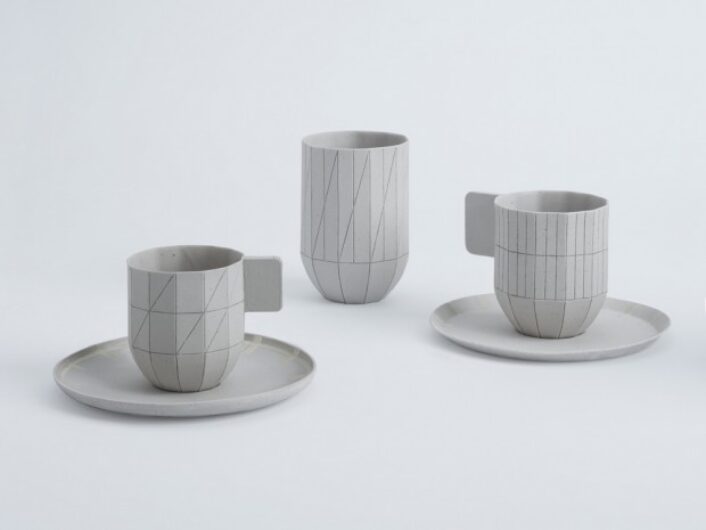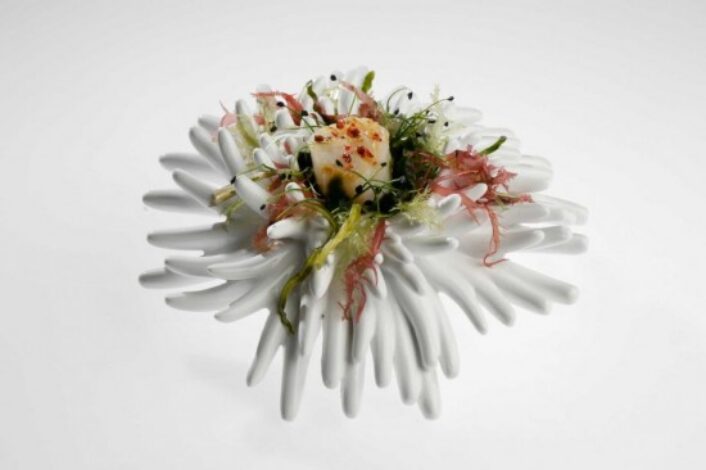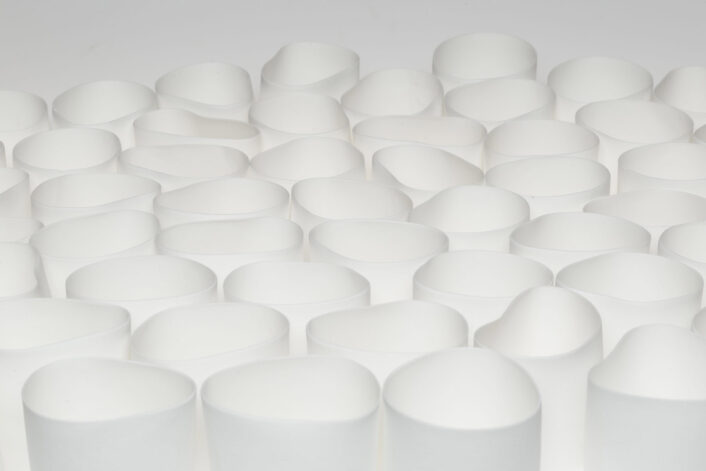Design
When food scraps become servingware
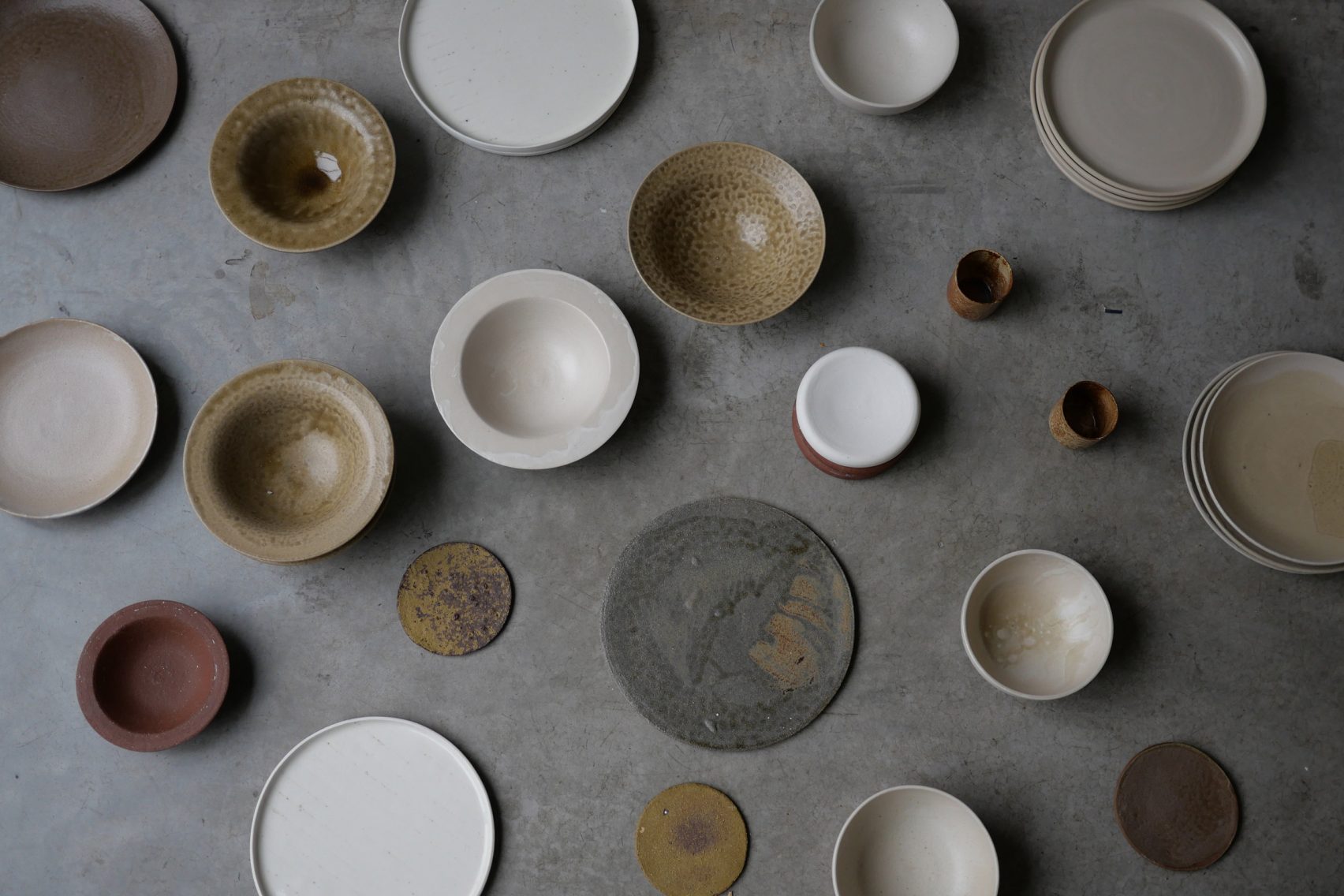
An assortment of dishes for the restaurant- Angela’s of Margate, a small seafood restaurant in England.
Image courtesy of: Dezeen
Carly Breame, the London-based ceramics designer, believes in transforming seafood scraps into stylish plates and bowls. It is well known that restaurants are notorious for wasting massive amounts of food… and Breame wants to change that as much as she is able to.
Recently, Breame created “Off the Menu,” a collection of dishes that consists of ceramics made from a local restaurant’s food scraps. Specifically, Breame used fish bones, fruit peels, and oyster shells to create servingware for the same restaurants that supply the “supplies.”
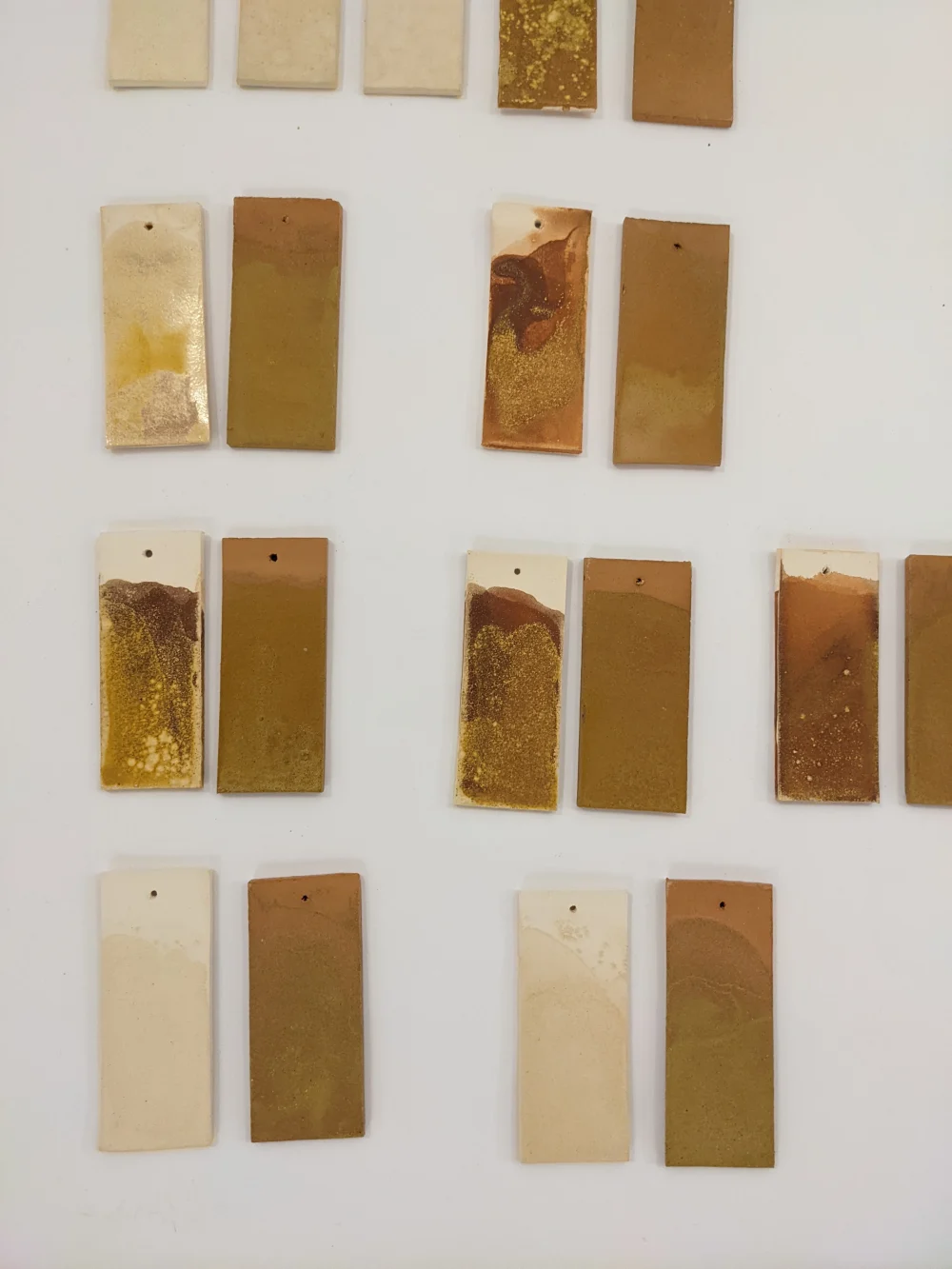
An assortment of Breame’s glaze selections, produced during the designer’s AER Residency at Mahler & Lewitt Studios.
Image courtesy of: University of the Arts, London
Breame’s collection is inspired by the restaurant’s menu flow. The introductory dish, Seafood and Wine, is made from oysters, mussels, and scallop shells. To compliment the food, the servingware’s glaze is made from crushed wine bottles. The main course dishware, Fish and Chips, is made from fish-bone ash in the clay body and potato peelings in the glazing. And the dessert bowl, Fruit Salad, is made from orange peels, banana peels, and mint stalks. In conclusion, the cup is made from corn husks and charcoal ash.
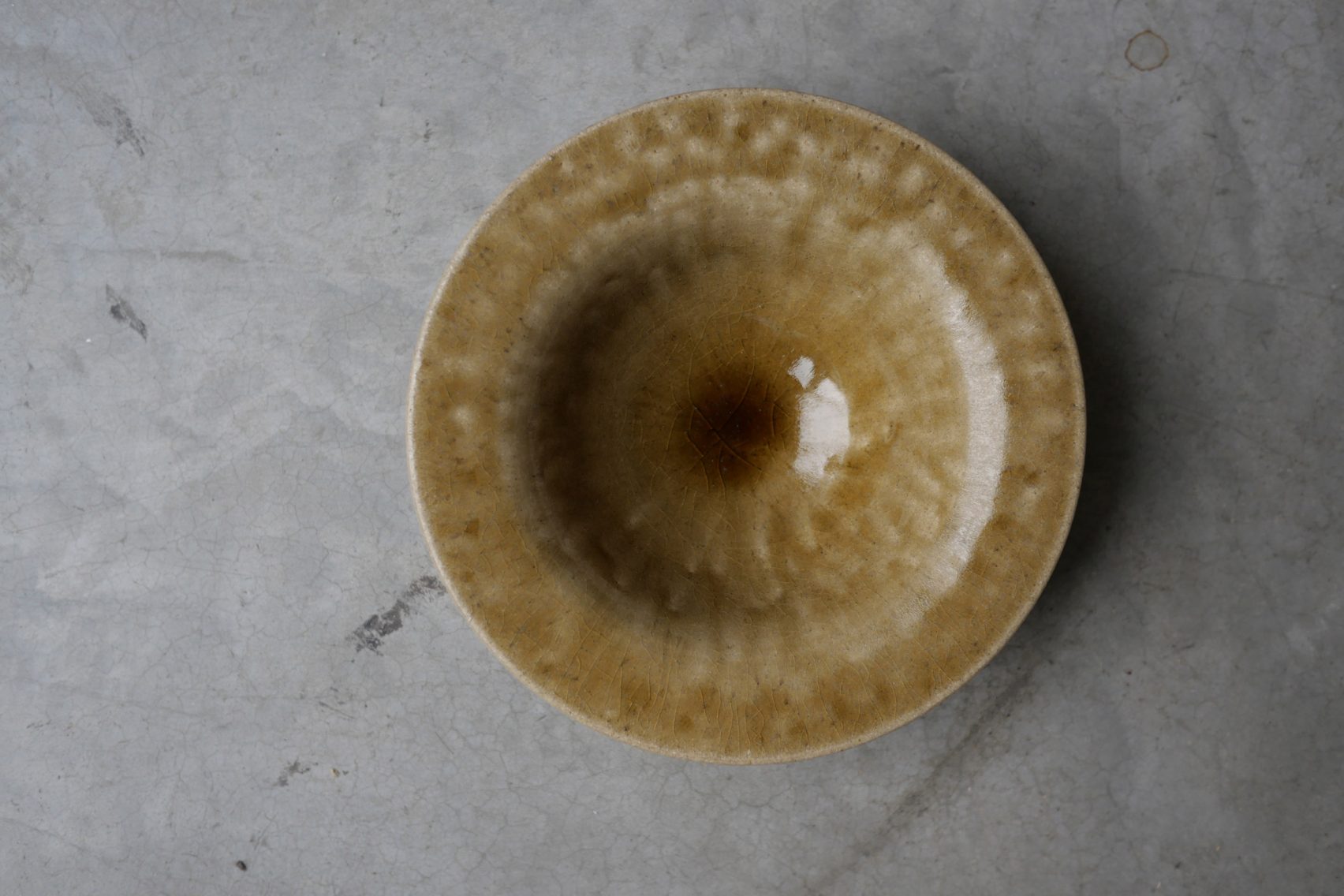
From the Seafood and Wine collection, this plate is made with wine bottle glass in the glaze.
Image courtesy of: Dezeen
Breane’s process is strategic… she kiln-fires and then grounds up the components. Rather than using traditional clay and glaze materials, the designer uses the scraps. She says (courtesy of Dezeen), “A single ceramic plate can have ten ingredients, all providing something different. For the fishbone china, I replace the bone ash with fish bones due to the properties being the same. Whereas the glaze, I managed to replace all the ingredients for the Seafood and Wine, as some of the ingredients covered two or more properties.”
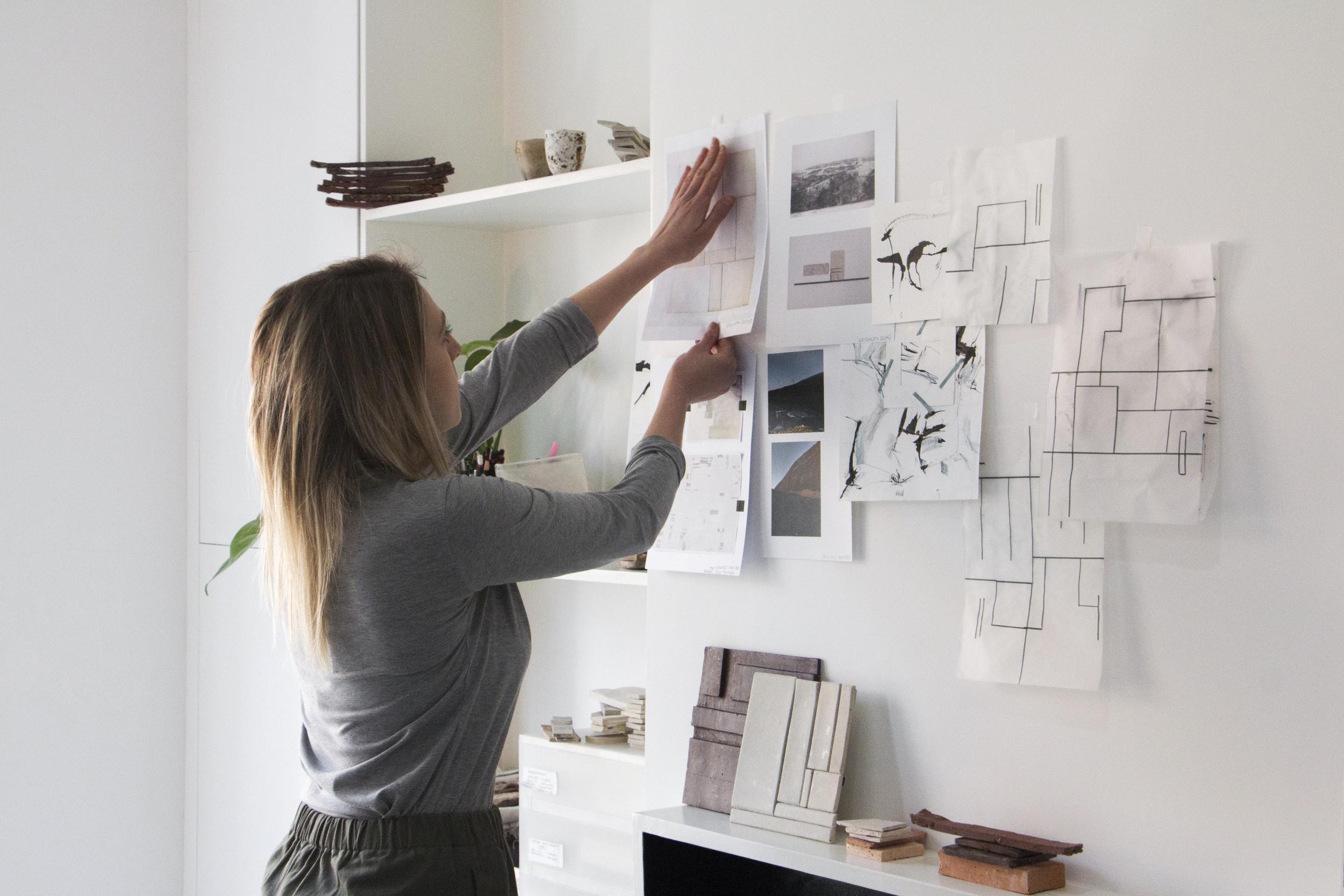
Breame with some of her projects.
Image courtesy of: Carly Breame Ceramics
Quite a bit of experimentation and testing went into how to properly incorporate these non-traditional materials. For Breame, this was the “most rewarding” part of the process. One important thing she learned was that the fish bones needed to be boiled in order to remove the excess flesh. Following this stage, the bones were calcined in a kiln, and then ground up using a mortar and pestle.
Combining craft and research, Breame’s practice is usually “site responsive” and a representation of the local surroundings. For “Off the Menu,” she studied the use of local waste resources as a method for degrowth. The ceramist proposed (courtesy of the artist’s web site) “food waste as a tool for environment and social regeneration. The project worked in collaboration with a locally committed restaurant to develop a collection of ceramics using local materials and restaurant waste. The ambition was to develop a conversation around the production and consumption levels in dining and offer environmentally focused solutions.”
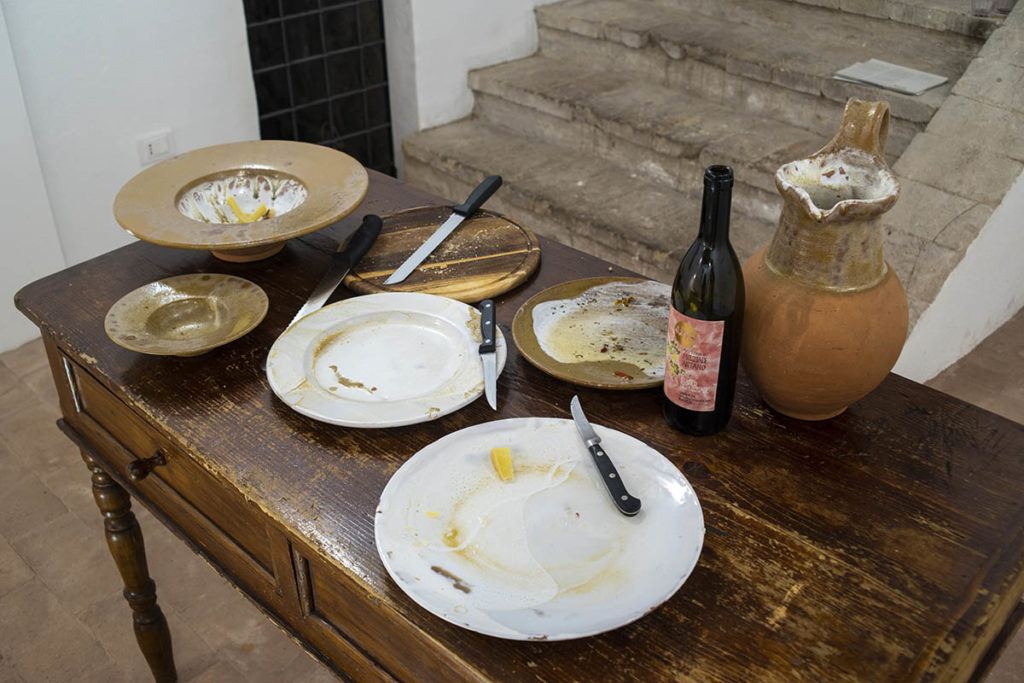
“Off the Menu” pieces in use…
Image courtesy of: Mahler-Lewitt
We love this quote by Breame, “As a maker, I develop functional ceramic works that center around the dining table, acting as a representation of the local environment. The ambition and motivation is often how to reconsider the materials we use and work towards circular economy goals.” What’s not to love?
